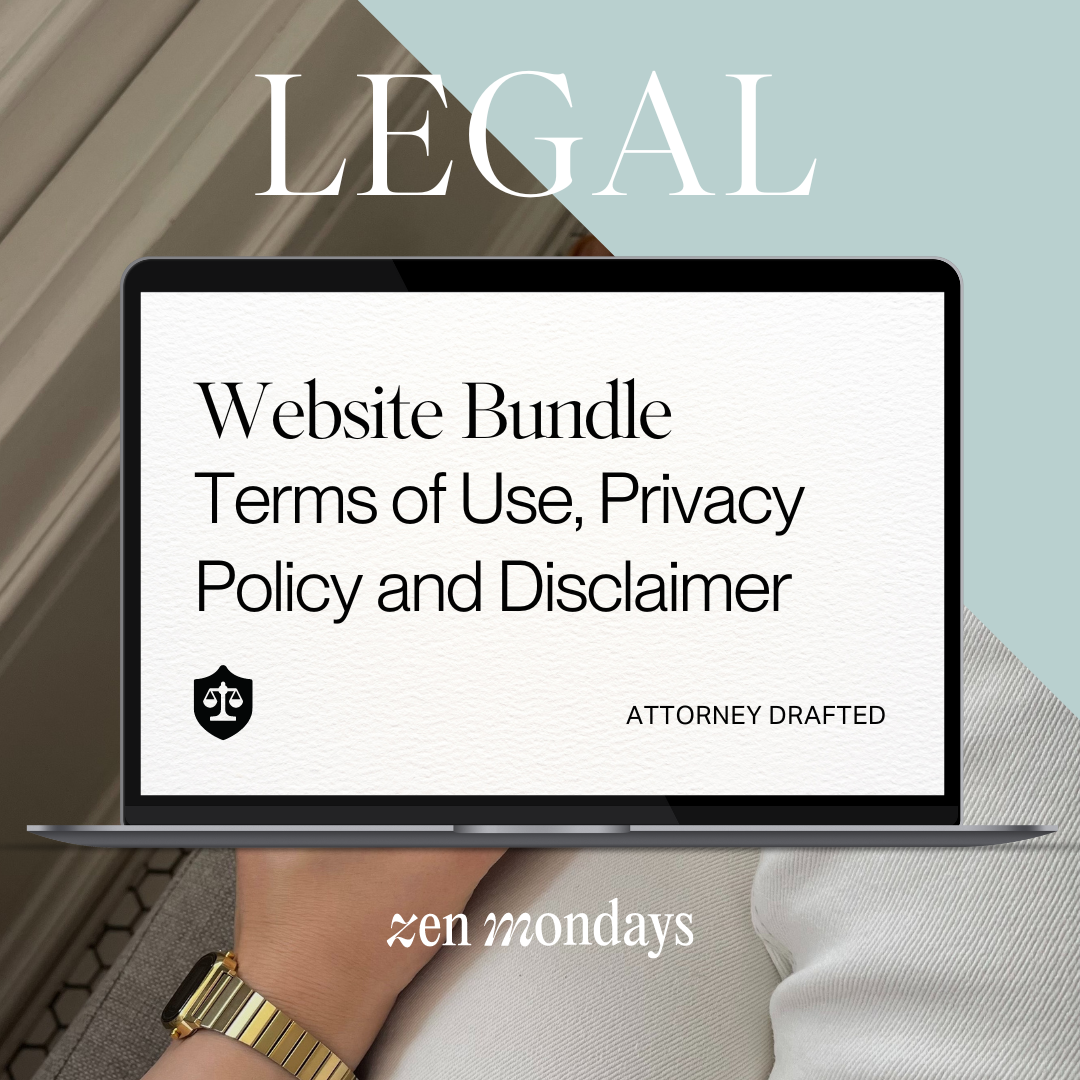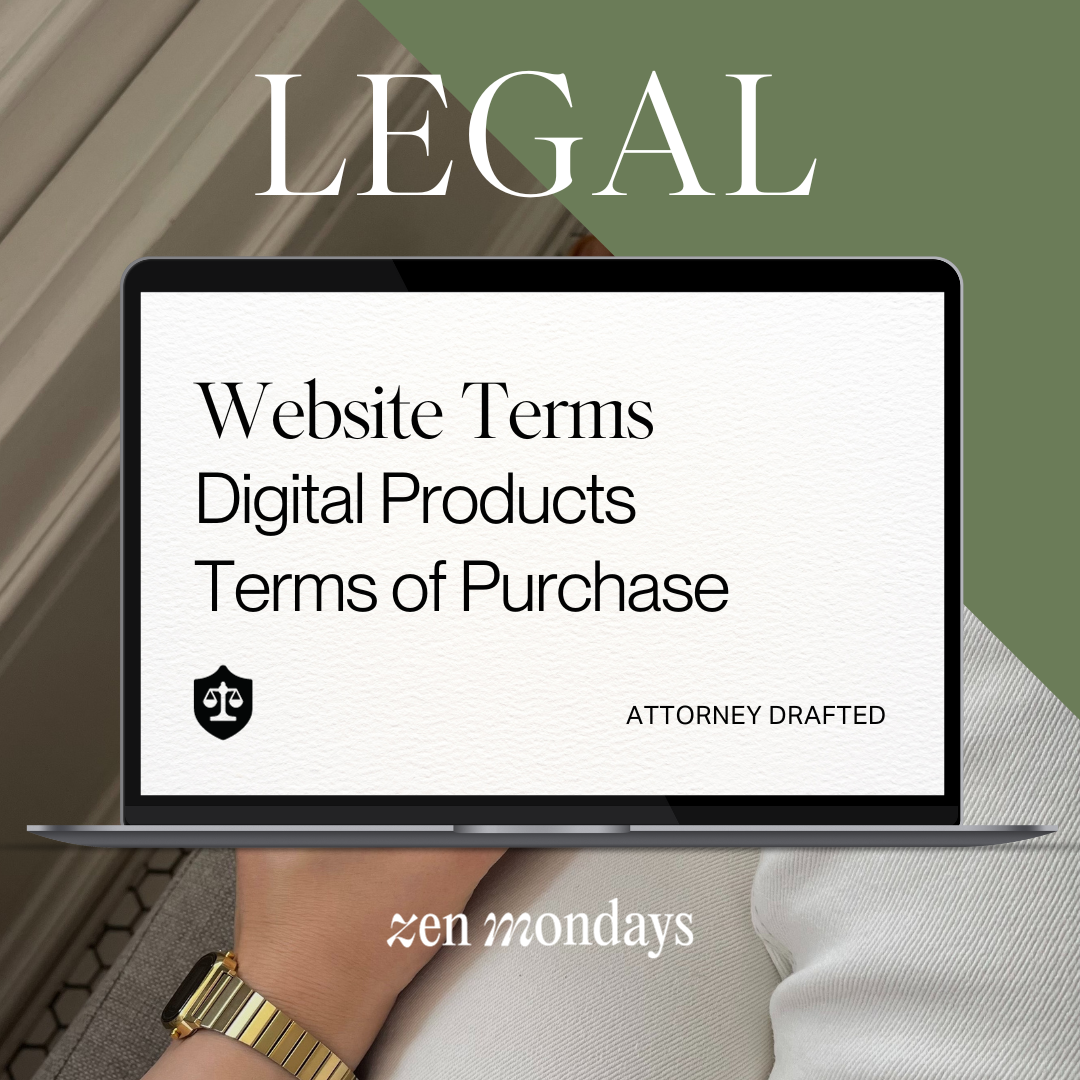Understanding Website Terms: Terms of Use or Terms and Conditions, Privacy Policy and Disclaimers
Navigating the complex world of website terms, such as terms of use or terms and conditions, privacy policy, and disclaimers, can feel overwhelming. However, understanding the differences between these terms and their importance is crucial for legal compliance and user protection.
This blog post will guide you through the intricacies of these critical documents and provide practical advice to ensure your business is well-equipped to safeguard its interests and foster trust with users.
Short Summary:
Terms of Use or Terms and Conditions, Privacy Policy and Disclaimers provide a legal framework for websites or apps.
Best practices include seeking legal advice, using generators to create documents and incorporating terms into user experience.
Defining Important Website Terms
Before diving into the specifics, it’s essential to understand the purpose and definition of website terms such as Terms of Use, Privacy Policy, and Disclaimers. These legally binding agreements outline the rules and conditions for using a website or app, as well as how a business collects, uses, and protects users’ personal information.
By ensuring these documents are accurate, clear, and easy to find, businesses can build trust with users and maintain legal compliance by keeping everything in the same document.
Terms of Use or Terms and Conditions: Definition and Purpose
Terms of Use, also referred to as Terms and Conditions or service agreement, outline the rules and guidelines for using a website or app. These agreements protect the business and its users by providing clear expectations regarding user behavior, data usage, and intellectual property rights.
The importance of Terms of Use cannot be overstated, particularly for businesses offering products or professional consulting services. These legally binding documents help safeguard the business owner from potential liabilities, ensure users understand their rights and responsibilities, and build trust with customers by providing transparency and clarity.
Privacy Policy: Definition and Purpose
A Privacy Policy is another crucial legal document that outlines how a business collects, stores, and uses personal information gathered from its customers, clients, or employees. The purpose of a Privacy Policy is to provide users with a clear understanding of how their personal information is being handled and protected by the business.
In today’s data-driven world, a comprehensive and transparent Privacy Policy is essential for building trust with users and maintaining legal compliance. By informing users about their data rights and the measures taken to protect their information, businesses can foster a more trusting relationship with their customers and reduce the risk of legal disputes.
Disclaimer: Definition and Purpose
Disclaimers are statements that deny responsibility or legal claim, limit liability, or specify the scope of rights and obligations. They are often used to prevent misunderstandings or to warn users of potential risks associated with using a website or app.
By including disclaimers in your website terms, you can limit your business’s liability for potential damages or misinformation on your website or app. This can be particularly important for businesses that provide information, advice, or services that have the potential to cause harm or legal disputes if misused or misunderstood.
Key Components of Terms of Use, Privacy Policy and Disclaimers
Now that we’ve covered the basics, it’s important to understand the essential components of Terms of Use, Privacy Policy, and Disclaimers to ensure legal compliance and user protection. Each of these documents contains provisions that guarantee the safe and responsible use of a website or app, addressing issues such as user-generated content, dispute resolution, and liability limitations.
These documents are essential for any website or app, as they provide a legal framewor.
Essential Elements of Terms of Use
Key elements of Terms of Use include data usage, cookies, intellectual property rights, and limitations of liability. For instance, your Terms of Use should clearly state how visitor data generated by visiting your website will be used, whether it will be shared or used for any purpose, and any relevant rules regarding cookies.
Additionally, it’s important to include provisions regarding intellectual property rights, protecting your website content from unauthorized use or copying. Liability clauses should also be included to limit your business’ exposure to potential legal issues that may arise from the use of your website or app.
Essential Elements of Privacy Policy
A comprehensive Privacy Policy must include information about how your business collects, uses, stores, and shares personal information, as well as the rights users have in relation to their data. This includes details about the types of data collected, the purpose of data collection and usage, storage and security policies, and any opt-out procedures available to users.
By providing a clear and transparent Privacy Policy, you can reassure users that their personal information is being handled responsibly and in accordance with applicable laws, fostering trust and minimizing the risk of legal disputes.
Essential Elements of Disclaimers
Disclaimers should address potential risks, inaccuracies, and limitations of liability associated with using your website or app. This may include warnings about the accuracy or reliability of information provided, the risk of using certain features or services, and any limitations on your business’s liability for damages or losses incurred by users.
By including comprehensive disclaimers in your website terms, you can protect your business from potential legal disputes and ensure users are fully aware of the risks and responsibilities associated with using your website or app.
Best Practices for Drafting and Implementing Terms of Use, Privacy Policy and Disclaimers
With a solid understanding of the essential components of Terms of Use, Privacy Policy, and Disclaimers, it’s important to implement best practices to ensure legal compliance and user understanding. This includes seeking legal advice and effectively displaying and incorporating these terms into the user experience.
By taking the time to understand the governing law implications of these documents, and ensuring that they are properly drafted, you can minimize potential legal costs in the future.
Drafting Tips
When drafting your website terms, it’s crucial to seek legal advice from a competent lawyer or legal practitioner. This ensures that your documents are legally binding and in accordance with all relevant laws. One option for creating customized documents is using a Terms and Conditions Generator or a template.
However, it’s essential to ensure that your generated service document or template is customized to your specific business needs and is legally binding. This can be achieved by modifying the document to include specific provisions and arrangements relevant to your business and seeking legal advice to confirm compliance.
Why you should purchase our Standard Website Terms Toolkit
Our Standard Website Terms Toolkit templates offer a customizable solution for businesses seeking to create tailored and legally compliant website terms. By using our templates, you can ensure uniformity, save resources and capital, and protect your business from potential legal ramifications.
Investing in our Standard Website Terms Toolkit is a smart decision for any business looking to safeguard its interests and foster trust with users. With our customizable templates, you can create accurate and legally binding website terms that reflect your specific business needs and legal requirements.
Implementation and Display
Proper display and user consent are crucial for ensuring your website terms are legally enforceable and understood by users. One effective method to achieve this is by using clickwrap agreements, which require users to actively consent to the contractual agreement of the terms before using your website or app.
In addition to clickwrap agreements, consider incorporating your website terms into the user experience by displaying a pop-up window or requiring users to check a box to accept the terms during sign-up or checkout processes. By making your terms visible and easy to understand, you minimize the risk of legal disputes and foster trust with your users.
Summary
In conclusion, understanding the differences between Terms of Use, Privacy Policy, and Disclaimers, as well as implementing best practices for drafting and displaying these documents, is essential for legal compliance and user protection. By investing in our Standard Website Terms Toolkit, you can create tailored and legally compliant website terms that accurately represent your business and build trust with users. Remember, a well-crafted set of website terms not only protects your business, but also fosters a transparent and trustworthy relationship with your users.
Frequently Asked Questions
-
Terms and conditions are more generic in nature and represent the broad rules of an agreement. An agreement, on the other hand, is customized to each individual customer and is often used for more complicated product sales.
Thus, while terms and conditions offer general protection, a client agreement provides specific details for each particular business transaction.
-
It is generally accepted that there is no legal difference between Terms of Use and Terms and Conditions. They are both names for legally binding agreements that establish the rights and responsibilities of a website or app’s users.








